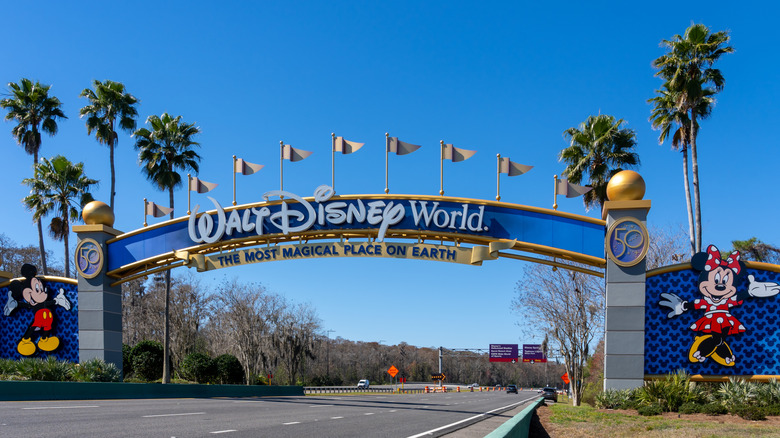Why Florida's Only 'No-Fly Zone' Is Over Walt Disney World
Many Americans became familiar with the term "no-fly zone" following the 9/11 attacks, when one was established around Washington, D.C., but the concept is not much older than that. The first no-fly zone was actually imposed in Iraq in 1991 as part of the cease-fire agreement that ended the Gulf War. These areas of restricted airspace, called Temporary Flight Restrictions by the Federal Aviation Administration (FAA), are safety measures that prevent aircraft of all types and sizes from getting too close to specific areas. They make it easier to identify aircraft that could pose a threat. A no-fly zone doesn't always mean that no planes can fly over that area. Sometimes planes are allowed at 3,000 feet or above, but this would still restrict most commercial planes.
It's hard to pin down how many no-fly zones there are in the U.S. because, as the FAA terminology implies, they are often not permanent. Many of the areas of restricted airspace are around military installations, like Camp David in Maryland and Naval Submarine Base Kings Bay in Georgia, but there are a few no-fly zones that will likely surprise you. Kennedy Space Center in Florida is one — at least during rocket launches — but did you know that when you visit Cinderella's Castle at Walt Disney World in Orlando, you're protected by a no-fly zone? The restriction is officially in place as an anti-terrorism measure, but there are additional benefits for the Most Magical Place on Earth.
Frontierland, fireworks, and flight restrictions
The restricted airspace over Disney World was put in place as a temporary measure in 2001, along with Disneyland in California. The parks were identified as potential targets, and in 2003, the temporary order was made permanent by Congress as part of Operation Liberty Shield, making it illegal for any plane to fly below 3,000 feet and within three miles of the park. The ban includes planes, helicopters, and even drones. Places like the aforementioned Kennedy Space Center and stadiums with a capacity of 30,000 or more often have temporary flight restrictions in place, but Disney is the only area with permanent no-fly restrictions in place.
No other theme parks in the U.S. have flight restrictions over them. Even large and popular parks such as Universal Studios in Los Angeles or Hershey Park in Hershey, Pennsylvania, have unrestricted flight paths. Critics of the flight restrictions over Disney claim that the Magic Kingdom had ulterior motives in requesting the no-fly zone. In the two decades leading up to 9/11, aerial advertisements — planes towing massive advertising banners behind them, often from competitors — were a serious problem for Disney. After the flight restrictions were put into place, the Aircraft Owners and Pilots Association reported that almost 100 aerial advertising firms went under. In 2022, the Airlines Independent of Restrictions Act (AIR) was introduced to Congress and sought to rescind the flight restrictions over Disney World and Disneyland, citing favoritism, but the bill did not pass.

